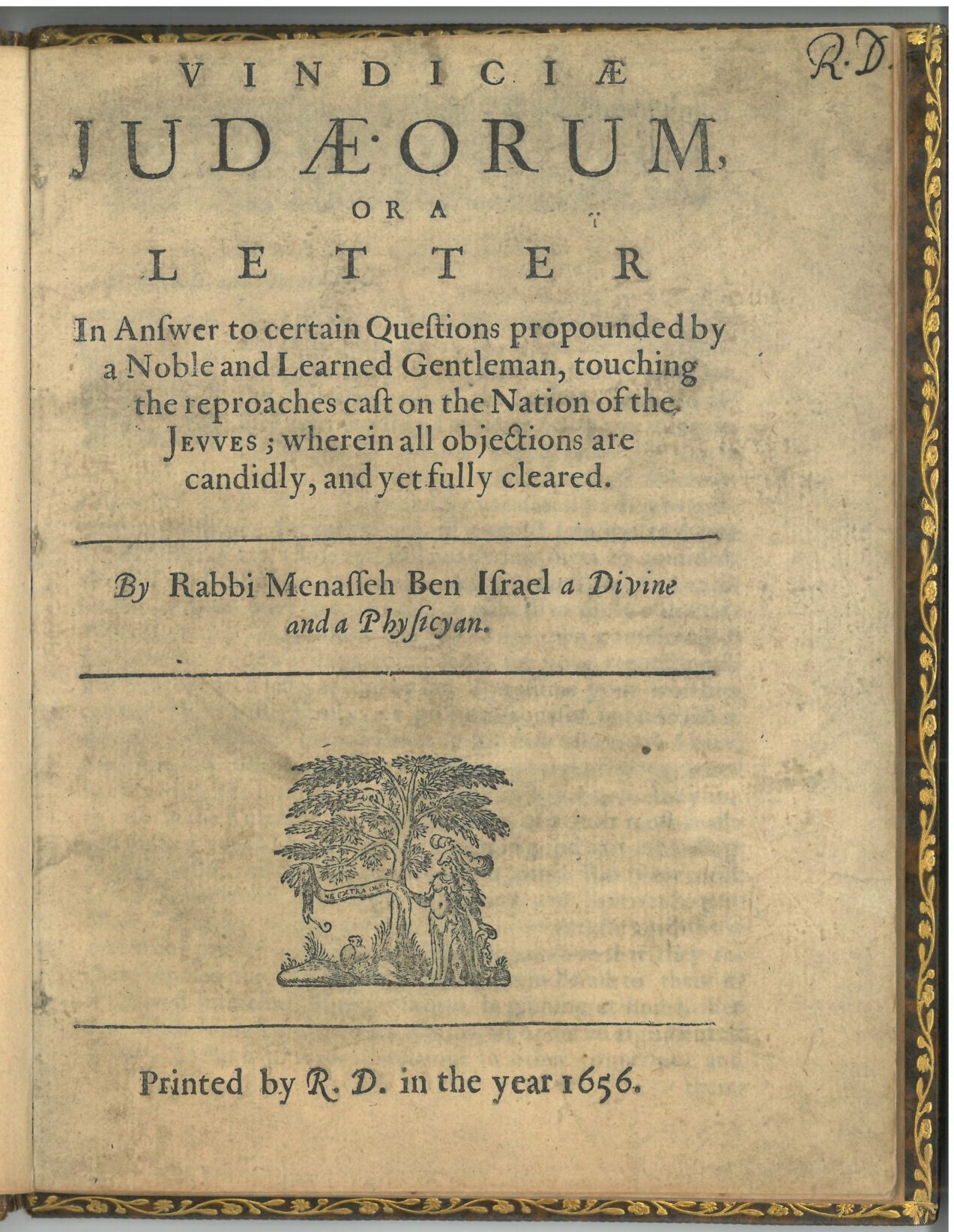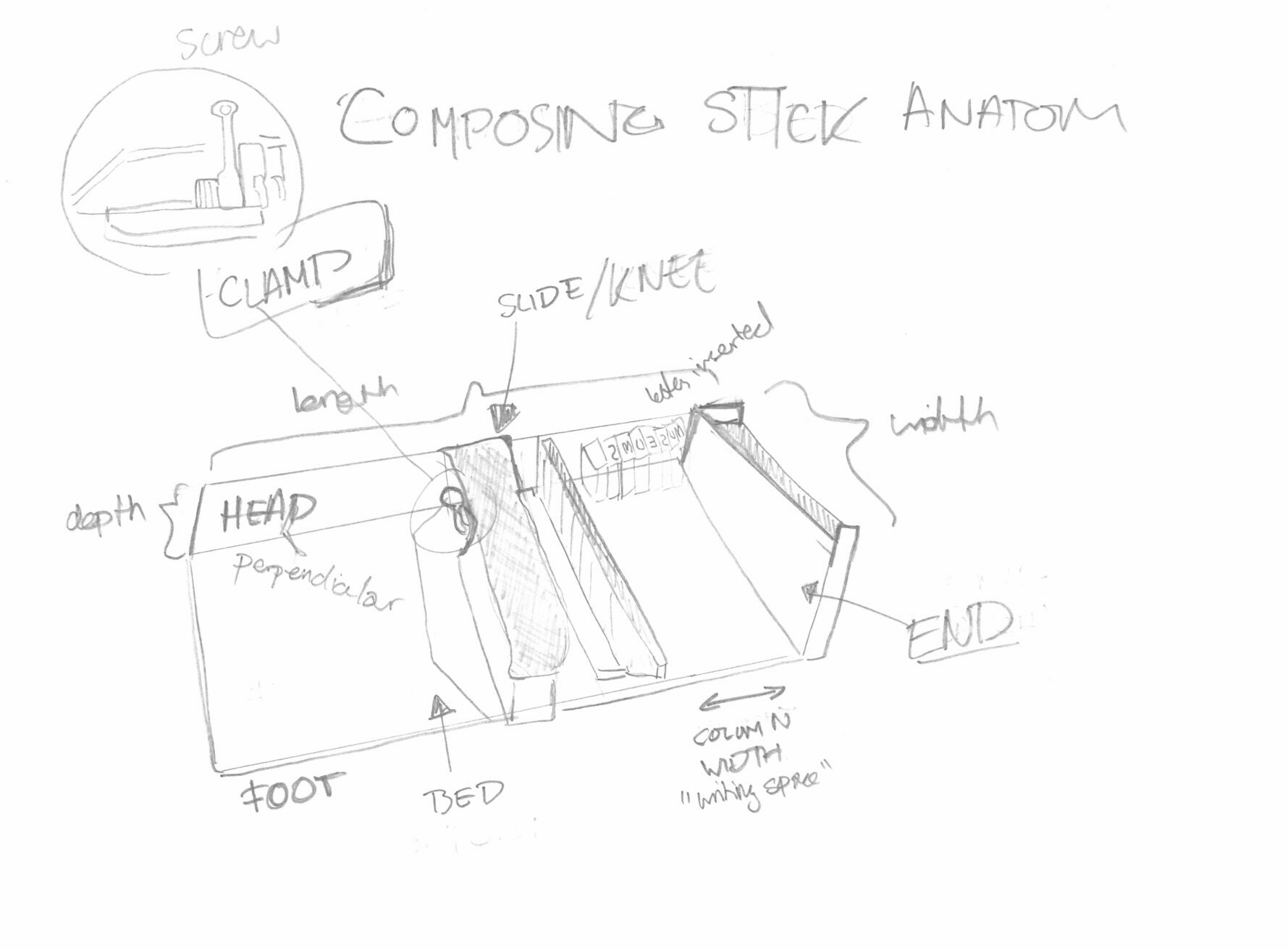Print Matters at the Jewish Museum London
 1987.83.3.3 - Metal compositors stick
1987.83.3.3 - Metal compositors stickAs part of my Collections Placement at the Jewish Museum London (JML), I have audited many of the Museum’s prints, plates, and printmaking tools. Among the objects I have been handling and researching have been photographic etching plates; aleph-bet woodblocks; 17th century books; Harry Blacker’s satirical cartoons (as featured in the 2018 exhibition); and tools for printing. I have particularly enjoyed looking into the forms, styles and techniques of letterpress printing and moveable type.
Letterpress printing is a relief process: a surface with raised letters is inked and pressed on to a printing substrate (such as paper) to reproduce an image in reverse. Print revolutionised and democratised the exchange of knowledge and ideas as texts could be standardised and disseminated cheaply and rapidly. As print media spread, reading became more accessible and affordable and literacy rates increased. This technology transformed social and political spheres as a wider range of people shared their ideas, expressed and educated themselves.
This blog post gives a brief overview of some printers, tools, and products associated with the Museum’s rich collection.

Fig. 1 – JM 990. Rabbi Menasseh Ben Israel (1604-1657)
Moveable type, a system of printing that uses components (such as letters, numbers, and punctuation marks) to produce a document, was invented in early 11th century China and the earliest known codex printed using this process was created in Korea in the 14th century. Mechanised printing became available in Europe when Johannes Gutenberg built his press circa 1440 in Mainz, Germany.
Jewish printing houses are at least as old as Gutenberg’s, although Jews were initially excluded from the printing industry by the local German guilds. As the technology was instituted in Italy, Spain, and Portugal, Hebrew printing exploded: there are circa 100 extant 15th century Hebrew incunables (early printed books). Akiva Aaronson’s monograph on the history of the Hebrew book determines that between 1450 – 1500, there were twenty-nine active Hebrew printing shops, making up nearly one-fifth of all known printers.
One early modern Jewish printer represented in the JML’s collection is Menasseh Ben Israel (1604 – 1657). A renowned rabbi from a Portuguese converso family, Menasseh started his own press, called Emeth Meerets Titsmah, circa 1626 in Amsterdam and became an important and influential figure in his trading as well as Jewish and local communities. He features at the JML in a candid and sympathetic portrait etching by Rembrandt (Fig. 1) previously on show in the main gallery. It is certain that Menasseh and Rembrandt knew each other; some scholars have suggested that Rembrandt may have consulted Menasseh for the Aramaic inscription in Belshazzar’s Feast (National Gallery, c.1636).

Fig. 2 – JM 655a. Vindiciae Judaeorum by Menasseh ben Israel, 1656
Indeed, Menasseh throughout his life “translated” Jewish matters to Christians, as is evidenced in the JML’s copy of Vindicae Judaeorum (1656, Fig. 2). This small and fragile codex contains an extended letter to Oliver Cromwell appealing for the resettlement of Jews in England. It is a fascinating and layered object which evidences, although likely rebound in the 18th century, techniques and styles of printing and bookmaking with its beautiful ornament, historiated initials, and catchwords but also this significant moment in Anglo-Jewish history.
Although Menasseh’s petition ultimately it did not result in any legal ruling, this book opens an aspect on antisemitisms of the period as Menasseh eloquently addresses and refutes an array of “reproaches cast on the nation of the Jewes” such as the blood libel. Likely printed in Roger Daniel’s London shop (the initials RD have been inked in the upper right-hand corner of the frontispiece), this text demonstrates how print addressed and rapidly circulated the most urgent and current issues of the day.

Fig. 3 – 1987.83.3.1, Metal compositors stick.
300 years later, the printing industry continued to be important enterprise for Jewish communities, particularly that of London’s East End. Although by the 20th century metal equipment was now favoured over wood, the mechanical aspects of the trade had changed little since its invention. I was fascinated when I came across the JML’s collection of compositors sticks (for example, see Fig. 3) and curious to find out more about these weighty, utilitarian devices and how they were used. Mr Brown, when he donated these items to the museum, wrote
I am retired printers compositor, the tools of my trade are no use to me anymore, and with the new processes of typesetting, computer processing etc, there is little hand-set hot-metal type. It would hardly be any use to a modern day apprentice … In my younger days, printing in the East End was an industry.
Working with one of these tray-like devices in one hand, with the other they would use a tweezer (Fig. 4) to pick out characters and punctuation, arranging (or rather, composing) texts by assembling the metal type into words and lines to set type for printed texts from a manuscript copy. One end has a slide, allowing the printed space on the page to be adjusted. In the process of working with these objects, I created a diagram of a compositors stick in order to understand how they functioned and the variations between their component parts (Fig. 5). You can also read in more detail about techniques of setting type here. When the type was set, it was transferred on to a galley and ‘locked up’ to print a page.

Fig. 4 – 1987.83.2. Metal pointed tweezers used for selecting type
What struck me about this set of tools is that they each have discrete styles – one has a curved ridge on the right-hand side so that it can be held comfortably by a thumb, one slide is held in place by a screw mechanism another by a lever, some are straight edged whilst others have rounder forms. I was also interested in sharp edges worn smooth, ink stains, residues of grease and sites where the steel has browned with use. These give clues as to how these items were used – how they were held, how frequently, with what other tools, which were favoured – but the wear on each is so minor it is clear that they were very carefully looked after.
Although functional tools of a trade, in donating the compositors sticks to the museum Mr Brown recognised their value for generations to come. These humble objects act as important material witness to the donor’s own life, – having held and used them almost every day – to the art of typography and provide a tangible connection to the realities working Jewish communities in London, social and labour histories, to centuries of print culture, and the very human desire to communicate.

Fig. 5 – Sketch of a compositors stick
Bibliography & further reading:
Akiva Aaronson, People of the Book: Five Hundred Years of the Hebrew Book from the Beginning of Printing until the Twentieth Century, (New York: Feldheim Publishers, 2014)
Isidore Cyril Cannon, The Compositor in London: The Rise and Fall of A Labour Aristocracy, (London: St Bride Library, 2011)
Elli Narewska, ‘The end of hot metal printing’, The Guardian, 3 March 2015
Henry Robert Plomer, A Dictionary of the Booksellers and Printers who Were at Work in England, Scotland and Ireland from 1641 to 1667, (London: The Bibliographical Society 1907)
Cecil Roth, A Life of Menasseh Ben Israel: Rabbi, Printer, and Diplomat (Philadelphia: Jewish Publication Society, 1934)
Nicholas Rougeux, A Brief Visual Exploration od Typography and its Accessory Arts
Lightboxes and Lettering project, https://www.lightboxeslettering.com/
Spitalfields Life, https://spitalfieldslife.com/